In the history of the Windows operating system, not every version has been popular with users. The most recent is of course Windows 8, but before that, Windows Vista was considered by many to be one of the worst operating systems Microsoft has ever delivered.
For many people who grew up using Windows XP, it’s frustrating to see how much slower Vista is. But is Windows Vista really that bad? After 17 years of this operating system’s launch, let’s look back and analyze it visually, to see what Vista has brought and how it contributes to the future of Windows.
Windows Vista is truly beautiful
Windows Vista may receive a lot of criticism, but most people cannot deny its beauty. Windows XP looks great, but Windows Aero’s glass and lighting effects definitely help make the operating system look very modern and still relevant today. Microsoft has been quite thorough in implementing this new design language, with essentially all the major elements of the operating system incorporating the new style to bring completeness throughout the operating system.
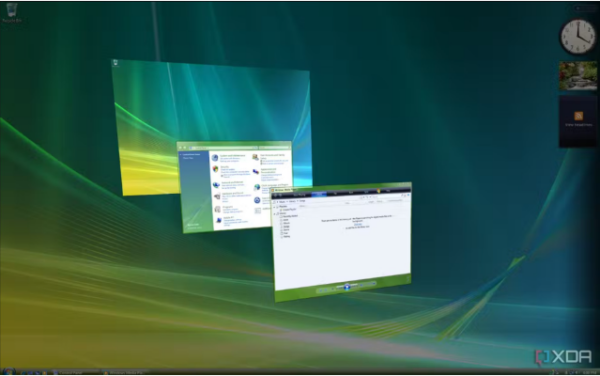
Windows Aero also offers a number of customizations that were never available in previous versions of Windows. There are many colors to choose from to make Windows look more personalized, while XP relies more on third-party software if users want any color other than green, blue or silver .
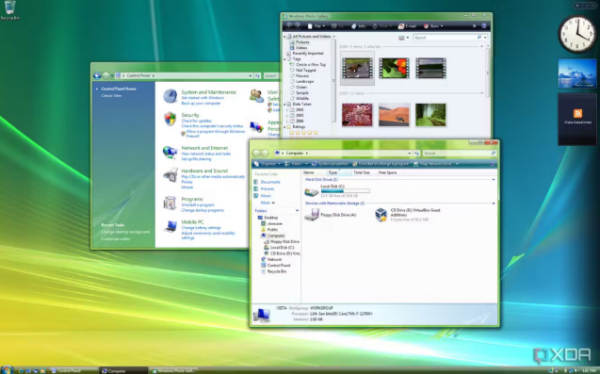
Vista also comes preloaded with games that are much more graphically advanced than XP, with remakes of games like Hearts and Solitaire, along with brand new games like Chess Titans and Purble Place. Windows Vista is built on the new Windows Display Driver Model to utilize the latest graphics hardware and DirectX 10. As a result, much of the operating system depends on enhanced graphics capabilities.
There are many new features
While Windows Vista might be seen as unwieldy, numerous additional features it introduced are highly useful, with many becoming essential components in later versions of Windows. For example, the Windows Sidebar, with widgets such as RSS feeds, clocks and photo galleries.
Widgets will later become a core feature in not only Windows but also other operating systems. Windows 11 now has a Widgets panel, macOS has Widgets that can even be placed on the home screen, and of course, both Android and iOS have had them for years.
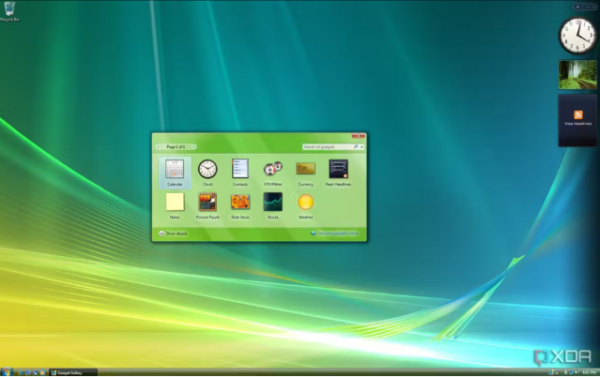
Some of the new features in Vista are truly welcome. Windows Update is built into the operating system and makes updating a little easier. Vista also introduces Disk Management Utility to resize and manage partitions, Shadow Copy to create backups of files and folders on a regular basis, and many security features such as BitLocker drive encryption, Windows Defender As a first line of defense against malicious software, User Account Control helps prevent unwanted changes to system files.
Windows Search has also been completely improved to make it easier to find files and applications on Windows. Many of these features, especially those aimed at security, still exist and are an important part of Windows today.
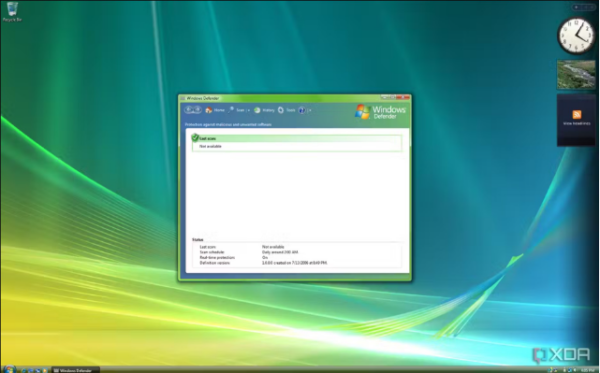
Vista is also a highly entertainment-oriented operating system, featuring new applications such as Windows Photo Gallery, the updated Windows Media Player 11, and a more prominent Windows Media Center.
What makes Windows Vista hated?
Requires high configuration and poor performance
One major issue often cited by many regarding Windows Vista is its performance. While Windows XP only runs on 64 MB of RAM, Windows Vista requires at least 512 MB, except for Starter Edition which requires 384 MB and is only available in some markets. Either way, it’s a big leap in terms of minimum configuration. And the recommended configuration is up to 1GB.
But an even bigger problem is that even those minimum requirements don’t really fit the operating system. Many Windows XP PCs are sold as compatible with Windows Vista, but the experience of running Vista on those PCs is terrible, and many features, like Windows Aero, require hardware that those PCs don’t have, so upgrading doesn’t seem worth it.
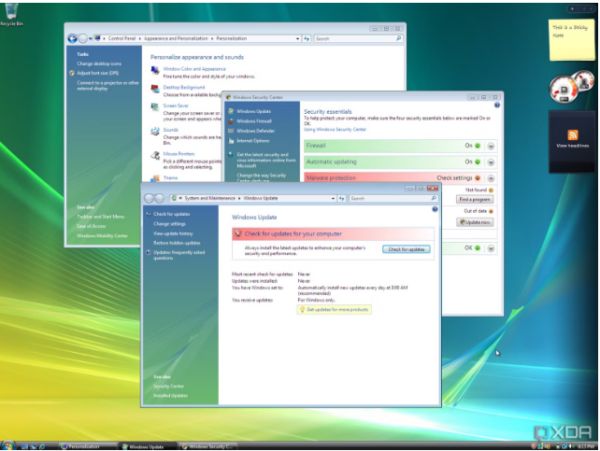
Vista also introduced big changes on the graphics front, with the new Windows Display Driver Model and DirectX 10 representing a huge step forward in gaming and graphics, but as a result the transition didn’t go well with Many early DirectX 9 titles ran poorly on Windows Vista. Also, again, many of Vista’s features rely on more advanced graphics, so older machines can’t handle many of the new features despite being advertised as compatible. For example, Windows Aero themes require more advanced hardware, so customization will be limited if the machine is not powerful enough.
However, things have improved over time. Overall performance has improved with updates like Service Pack 1, and of course, as modern hardware becomes more prevalent, the experience will get better. However, that didn’t help Vista’s reputation after its disastrous launch.
User Account Control (UAC)
Another point of contention is UAC, a feature built by Microsoft to help prevent random users from changing PC settings themselves. Essentially, UAC makes it impossible for a program to silently run with admin rights without the user noticing, thus theoretically increasing security. The problem is that Vista initially required users to grant admin permissions for almost everything they did on their computer, making it a tiring experience having to repeatedly choose to accept everything.
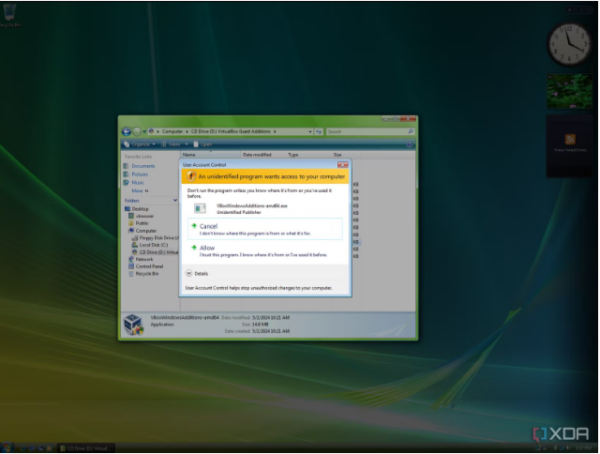
As with performance complaints, Microsoft has listened to users on this issue and things have improved with the Service Pack 1 update, which reduces the number of UAC prompts. Despite that initial backlash, UAC is still an important part of Windows today, although it has been tweaked to be much less annoying.
Windows 7 is essentially Vista 2
While Vista may be hated, it certainly laid the foundation for future versions of Windows, and its successor, Windows 7, has become one of the most beloved Windows versions of all time.
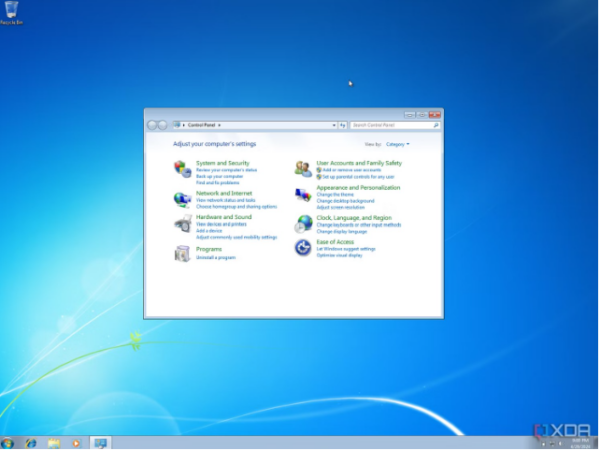
Windows 7 retains a lot of what Vista introduced, including the design language and most of the same features. The taskbar has been changed significantly, but otherwise, Windows 7 really feels like Vista “reborn”, and its popularity shows that Microsoft had a pretty good vision with that operating system, but they didn’t. faced a difficult transition due to major changes in hardware requirements.
And it’s worth noting that Windows 7 also doubles its RAM requirements compared to Vista, which helps ensure it runs much smoother. A big problem with Windows Vista is that the minimum configuration requirements often cannot meet the operating system’s features, thereby causing users to have a bad experience even though their computer can theoretically run the operating system. This. But Vista itself isn’t bad, especially with later updates.
Windows Vista may not be successful, but from a current perspective, it also deserves to be rated higher than when it was launched. Much of what Vista brought has become an important part of Windows today, especially in terms of security.










